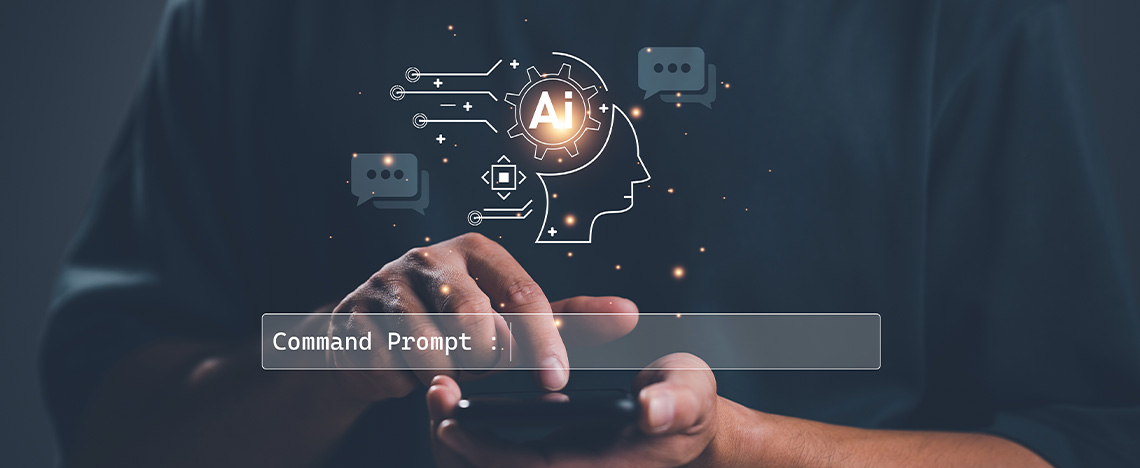
What We Talk About When We Talk About AI

Artificial intelligence (AI) has dominated tech industry headlines for years, but earlier this year, the conversation exploded. Since the ChatGPT prototype launched in December 2022, everyone has something to say about AI.
Amidst the buzz and sensationalism, it’s easy to lose sense of what AI means and its potential for marketing. Plus, it’s so complex and nuanced, it’s especially off-putting for those of us in non-technical roles.
Fortunately, you don’t have to understand AI on an advanced technical level to use it — but it’s still helpful for marketers to have at least a fundamental knowledge of what AI is (and isn’t). Given the speed at which AI is evolving and adopted, becoming familiar and comfortable with AI-powered tech is vital to your success.
Today, we’re sharing a quick primer to help you make sense of AI in marketing and better understand how to use it to solve your challenges.
What is AI?
In simplest terms, artificial intelligence describes any tech that uses machines (usually computer systems) to mimic human intelligence. Or, according to everyone’s favorite AI chatbot:
Interesting. So, of course, I had to ask…
At least it’s modest.
Of course, we can’t talk about what AI is without explaining what it’s not. For example, people sometimes confuse AI and automation because they’re similar concepts, and businesses use both for similar purposes — like increasing efficiency or improving operations. But they’re not the same thing.
Automation acts based on a defined set of rules — like, for example, an automated email workflow (I.e., “If a prospect takes this action, send this message"). But AI takes action based on its observations of patterns and understanding of the data that humans input to train it. For example, AI could generate hyper-personalized emails based on what it knows about each customer’s interests, past actions and typical behaviors.
In other words, automation-based tools rely on pre-programmed rules, while AI-based tools solve problems by learning. But, to better understand that concept, we need to delve into machine learning.
What's the difference between AI and Machine Learning?
When people use the term 'AI' to describe AI-based marketing tools, they’re often referring to tools that leverage machine learning (ML).
AI is a term that encompasses all systems that mimic human intelligence to complete tasks, and ML refers to a specific subset of AI software that uses data and algorithms to simulate the way humans learn. In other words, ML is the method through which AI learns, improves and becomes more accurate.
One way ML is helping AI become more sophisticated is through natural language processing (NLP). NLP is the field of AI focused on using machines to analyze and generate human language. AI-powered chatbots like ChatGPT, Google Meena, IBM’s Watson, Amazon Lex and Siri all leverage ML to improve their NLP, enabling them to understand your questions and respond in human language.
Still with me?
If you feel like you’re wading knee-deep in alphabet soup, you’re not alone! But, what’s most important to understand is that, thanks to machine learning, AI is becoming much better at handling tasks that previously required humans. And thanks to NLP, you don’t have to know programming languages to ask a tool like ChatGPT a question (or understand its answer).
3 Tips for Marketers To Get the Most From AI
Here are three things you can do to help harness AI’s power within your organization and marketing team:
Understand and account for AI's limitations
AI can do many amazing things, but it’s not perfect. For example, AI-powered chatbots are not 100% accurate and often lack context. Also, since AI/ML tools are trained on datasets created and fed to them by humans, they sometimes perpetuate biases and harmful stereotypes. And unlike humans, AI lacks emotion and doesn’t display creativity in the same way humans can.
So while an AI-powered tool can write a blog post, an email or several lines of code in seconds, that doesn’t mean it will be free of errors, evoke the right response from your audience or drive the action you need. You still need the human touch.
Identify the right AI/ML tools to address specific challenges
There are numerous AI/ML-powered marketing products on the market, but these tools are still considered “narrow AI,” meaning they’re designed to perform specific tasks. So, if you’re not sure where to start, take a moment to consider your most significant challenges and time-sucks to determine where you need AI/ML most.
For example, maybe you need help generating blog ideas, preparing outlines and helping your team of human content pros bust through their writer’s block. Or perhaps you need AI/ML to transcribe your video calls or personalize your emails.
An excellent place to start is with HubSpot’s new AI tools. The Content Assistant harnesses the power of OpenAI’s GPT model to suggest blog ideas, create outlines, generate paragraphs, write prospecting emails and create marketing emails. And the ChatSpot conversational CRM bot helps sales, marketing and service pros work more productively within HubSpot. For example, you can use ChatSpot to assist with tasks like drafting follow-ups, managing leads and generating reports. It can also provide status updates, help with prospecting and make forecasts.
HubSpot is continually expanding and enhancing its suite of AI tools for other needs too. Its AI solutions can optimize your marketing efforts and reduce your team’s workload through data cleansing, email data capture, recording and transcribing conversations, making SEO suggestions, providing adaptive testing and importing data from spreadsheets to the CRM.
Remember that, for each new tool, you’ll likely need to adjust your processes to ensure the best results, so it’s best you level up with one AI/ML solution at a time. Or, partner with an agency that has significant experience leveraging HubSpot’s AI tools and seamlessly implementing them into proven processes.
Get comfortable with change and AI
AI is here to stay, and it’s only becoming more powerful. While that prospect may cause discomfort (especially given the numerous Sci-Fi movies with less-than-desirable outcomes), it’s also exciting. AI/ML can help you and your team scale your efforts, allowing you to accomplish things that seemed impossible even a few years ago. It can free up time for you and your team to think more creatively and help you execute fresh, new big ideas.
The Bottom Line
Artificial intelligence and machine learning are complex concepts, and it’s easy to feel overwhelmed. But, much like Wi-Fi, smartphones or any major technological leap of the past century, you don’t have to be an expert to benefit — you just have to get comfortable with adopting and applying it for your needs. Over time, it will become so ingrained in your day-to-day that you’ll struggle to remember how you accomplished your business goals without it.




